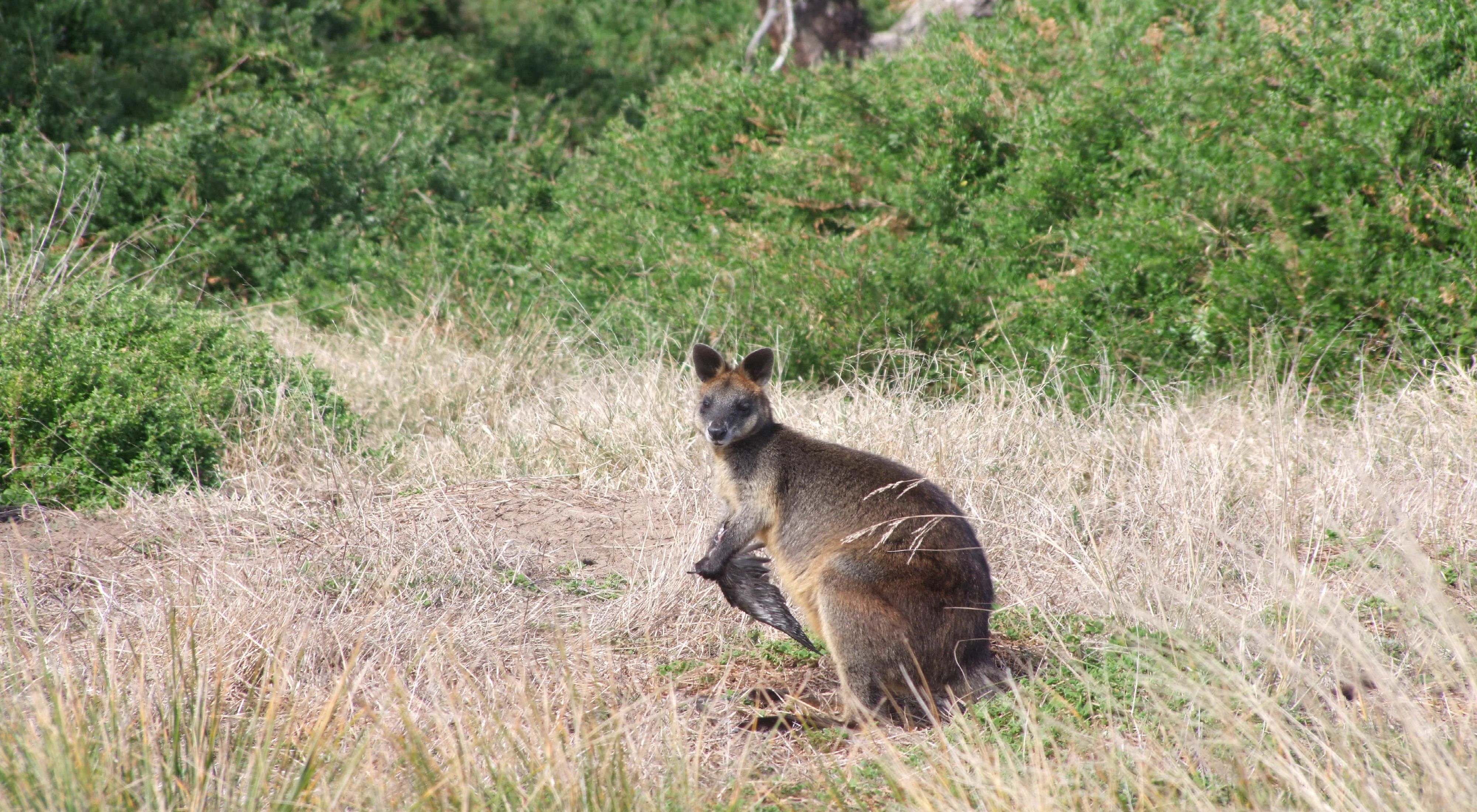Sometimes science can shatter our illusions and accepted beliefs. Kangaroos and wallabies are cute and cuddly strict vegetarians, right? Well … how do we break this to you? Occasionally evidence comes along that forces us to reconsider what we think we know about animals.
Our Director of Conservation, Dr James Fitzsimons, was driving on Phillip Island, just a few hours south of Melbourne when he saw a wallaby in a patch of grass holding something in its paws, something quite large. As he recently reported in Australian Mammalogy, he stopped the car, got out his camera and took some photos of what he was amazed to see – a Swamp Wallaby holding — and chewing on — the wing of a seabird.
Quote: Dr James Fitzsimons
I knew seeing a wallaby eating meat was a significant observation, so I kept taking shots and trying to get closer.
James watched the wallaby eat for a few minutes until a passing car startled it and it hopped away into the bush. He then went to inspect the wing. “Low and behold it was clear the wallaby had chewed into the marrow and the flesh of the wing of a Short-tailed Shearwater, a common seabird on the island,” said James. “It was quite unusual”.
What an ecologist calls ‘unusual’, others might call weird or even freaky.
While there was no evidence the wallaby caught the bird itself, the observation of a Swamp Wallaby eating carrion is the first detailed description of this behaviour for the species.
“It was in a pretty lush area, so the wallaby had ample opportunity for more typical browse,” said James. “It was just taking advantage of a different and perhaps unique, source of protein.”
You can read more about the story on our global science blog – Cool Green Science.
The Nature Conservancy is a global conservation organisation dedicated to conserving the lands and waters on which all life depends. Guided by science, we focus on getting things done efficiently and with the greatest positive impact for conservation. We’re a trusted organisation working in more than 70 countries and territories around the world on innovative solutions to our world’s toughest challenges so that nature and people can thrive together. To learn more about The Nature Conservancy in Australia, follow us on Facebook.
